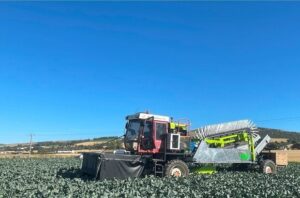
auto draft 2.jpg
Soil Types and Characteristics
Definition:
Soil Types and Characteristics refer to the various types of soils found in Texas, each distinguished by its composition, texture, fertility, and other physical and chemical properties. Understanding the characteristics of different soil types is essential for farmers and land managers to make informed decisions regarding land use, crop selection, and soil management practices.
Helpful Content:
The soils of Texas exhibit considerable diversity, reflecting the state’s varied geology, climate, and vegetation. From the rich alluvial soils of the river valleys to the sandy loams of the coastal plains, Texas soils offer a range of opportunities and challenges for agricultural production.
Fall off the barn roof and busted your keister? Life on the farm or ranch can be tough on the bum. Need a break? Laugh it off at FarmerCowboy.com, the #1 farm humor site. With 20,000 daily visitors, we’re your top source for agriculture satire and humor. Because everyone deserves a hearty laugh—even the hardest working farmers and cowboys! Join us and turn those long days into fun tales at FarmerCowboy.com.
Major Soil Types in Texas:
- Sandy Loam: Sandy loam soils are prevalent in the coastal plains and southeast Texas regions. These soils have a coarse texture and good drainage, making them suitable for crops such as cotton, peanuts, and vegetables.
- Clay: Clay soils are commonly found in central and northeast Texas. These soils have a fine texture and high water-holding capacity but can be prone to compaction and poor drainage. Clay soils are suitable for crops such as corn, sorghum, and soybeans.
- Blackland Prairie: The Blackland Prairie soils, also known as “Houston Black” or “Texas Black,” are dark, fertile soils found in the eastern part of the state. These soils are highly productive and support crops such as cotton, wheat, and sorghum.
- Limestone: Limestone soils are prevalent in the Hill Country and west-central Texas regions. These soils are alkaline and often rocky, posing challenges for agriculture. However, certain crops such as grapes and pecans thrive in limestone soils.
- Sand: Sandy soils are common in the arid and semi-arid regions of West Texas. These soils have a coarse texture and low water-holding capacity, requiring irrigation for successful crop production. Crops such as cotton, sorghum, and melons are grown in sandy soils.
Soil Characteristics and Management:
Understanding the characteristics of different soil types is essential for effective soil management and conservation. Key soil properties to consider include:
- Texture: The relative proportions of sand, silt, and clay particles in the soil, which influence water retention, drainage, and aeration.
- pH: The acidity or alkalinity of the soil, which affects nutrient availability and plant growth.
- Organic Matter: The presence of organic material in the soil, which contributes to soil fertility, structure, and moisture retention.
- Nutrient Content: The levels of essential nutrients such as nitrogen, phosphorus, and potassium, which influence plant health and productivity.
Farmers employ various soil management practices to optimize soil health and productivity, including:
By understanding the characteristics of different soil types and implementing appropriate soil management practices, farmers can sustainably utilize Texas soils for agricultural production while preserving soil health and fertility for future generations.
References:
- Texas A&M AgriLife Extension: https://agrilifeextension.tamu.edu/
- United States Department of Agriculture Natural Resources Conservation Service (USDA NRCS): https://www.nrcs.usda.gov/
- Soil Science Society of America (SSSA): https://www.soils.org/
- dairyexpo.info
- farmercowboy.com
- farmshow.eu
- farmshow.info
Originally posted 2010-09-10 03:03:02.
Originally posted 2024-06-19 07:00:56.
Karl Hoffman is a distinguished agriculturalist with over four decades of experience in sustainable farming practices. He holds a Ph.D. in Agronomy from Cornell University and has made significant contributions as a professor at Iowa State University. Hoffman’s groundbreaking research on integrated pest management and soil health has revolutionized modern agriculture. As a respected farm journalist, his column “Field Notes with Karl Hoffman” and his blog “The Modern Farmer” provide insightful, practical advice to a global audience. Hoffman’s work with the USDA and the United Nations FAO has enhanced food security worldwide. His awards include the USDA’s Distinguished Service Award and the World Food Prize, reflecting his profound impact on agriculture and sustainability.




Tesla’s self-driving feature is making every commute feel like an episode of your favorite game.
The internet is the ultimate platform for gaining new knowledge and skills, anytime, anywhere. ??
To understand the world, we must first be open to learning about it. ??